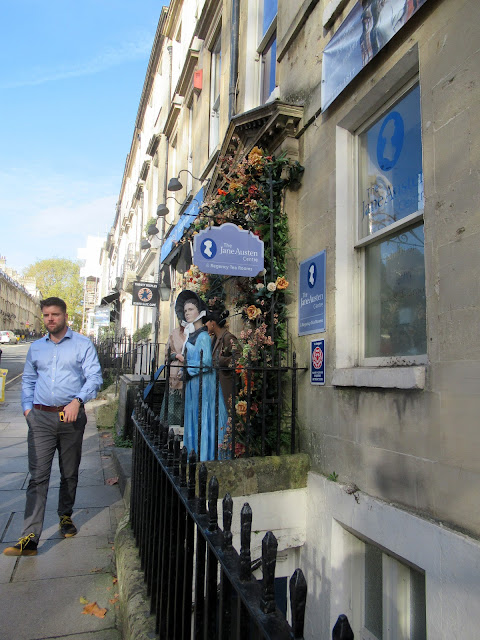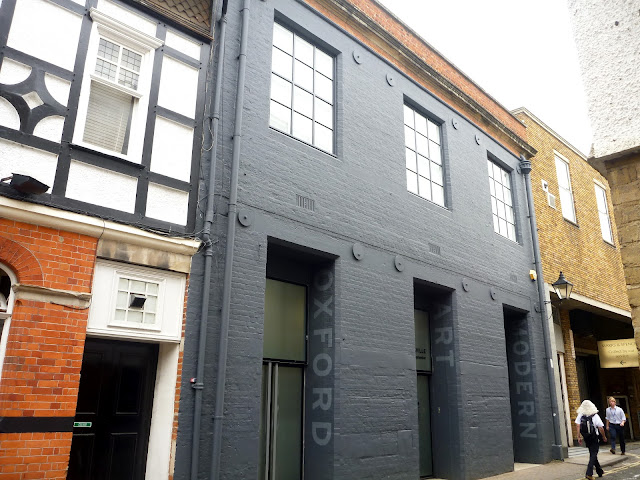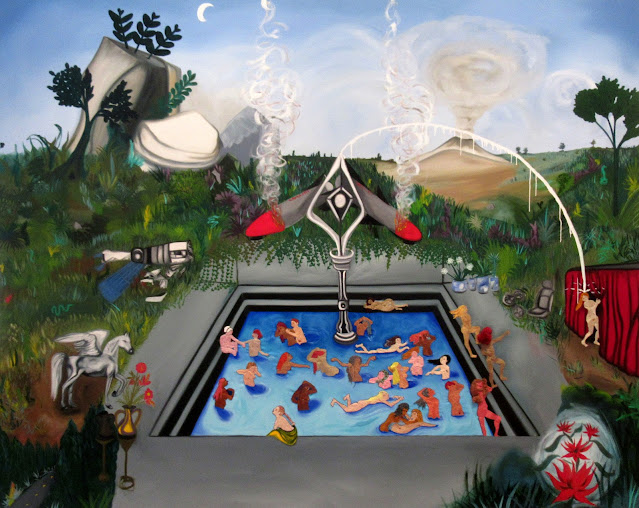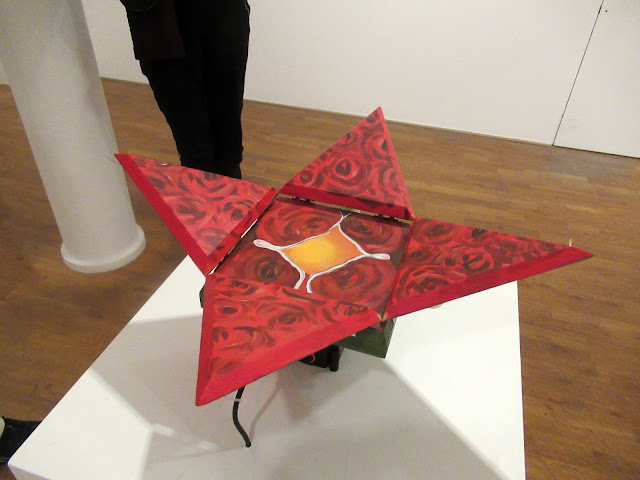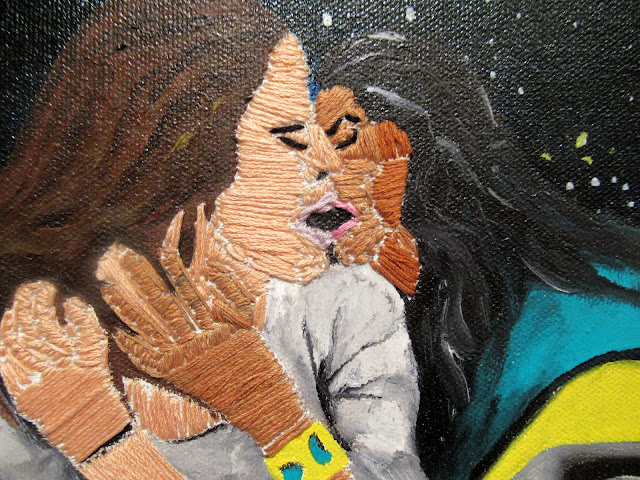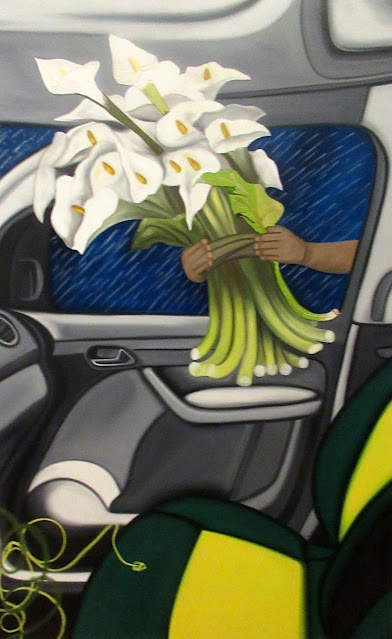It's a beautiful city which became a UNESCO World Heritage Site in 1987. Most of the buildings are made from the local, golden-coloured Bath stone, and many date from the 18th and 19th century. The dominant style of architecture in Central Bath is Georgian; this style evolved from the Palladian revival style that became popular in the early 18th century. Many of the prominent architects of the day were employed in the development of the city.
Many of the streets and squares were laid out by John Wood, the Elder, and in the 18th century the city became fashionable and the population grew.



I've always like this Abbey-through-arch on York Street

There are also some narrower streets that are full of shops and cafes
Some quirky buildings
and quite a few arches
The city became a spa with the Latin name Aquae Sulis (the water of Sulis) around 60 AD when the Romans built baths and a temple in the valleyr of the River Avon, although hot springs were known even before then. In the 17th century, claims were made for the curative properties of water from the springs, and Bath became popular as a spa town in the Georgian era.
According to Legend, prince Bladud first discovered the thermal waters around 863 BC when he was cured from his skin disease. The actual source of the waters remains unknown. The waters are a key reason for Bath being designated by UNESCO as a World Heritage Site and being credited as one of the Great Spas of Europe.
We did not go in the Baths this time as we have been at least twice before, but we did have a quick look at the King's bath again as one did not need a ticket to see that.
This Grade 1 Listed building, a Scheduled Ancient Monument, an official Sacred Site, is the home of the Cross Spring.
There is evidence that the Celts worshipped on this site and made offerings to their goddess Sulis. In the 1st century AD, the Romans built a Bath House around the spring which was re-dedicated to Sulis and the Roman Goddess of Healing, Minerva.
looking in.
This is where the modern baths are housed. There is a rooftop open pool where one can swim in 39oC temperature water and I was very tempted, but we did not have enough time - there was too much else to see.
The heart of the Georgian city was the Pump Room, which, together with its associated Lower Assembly Rooms, was designed by Thomas Baldwin, a local builder responsible for many other building in the city.
Bath Abbey was founded in the 7th century and became a religious centre; the building was rebuilt in the 12th and 16th centuries. The present building dates from the early 16th century and shows a late Perpendicular style with flying buttresses and crocketed pinnacles decorating a crenellated and pierced parapet. The building is lit by 52 windows. Again, we did not go in and we had done so on our last visit.
Jane Austen spent several years living and writing in Bath. Northanger Abbey and Persuasion are set in the city. During her active association with the city, which lasted approximately six years, she stayed at four different houses in Bath. The Jane Austen Centre is in Gay Street.
She apparently had a full English here.
Mary Shelley, then named Mary Wollstonecraft Godwin, wrote much of Frankenstein while living in Bath. She lived in Bath's Abbey Churchyard from 1816. It was there, it is believed, she wrote much of Frankenstein. The novel was published anonymously in 1818 to avoid the additional controversy of it being written by a woman. The story explored the ethics of science over creation.
On our last morning before driving back home we visited the market which is in the centre. Bath's market was described in a charter in 1371 as having held by held from time immemorial. At the time the market took palce in the open air in the High Street on Wednesdays and Saturdays.

The market remained in the High Street until 1776 when the Guildhall was built and the market was arranged around it. In 1818 there was an astonishing 438 stalls. A model for its age. In 1861 a new purpose built indoor market was erected and it has been going on since then. Its elegant cast iron and glass structure was innovative and attractive and for the last hundred years around 30 stalls have been housed here.


























